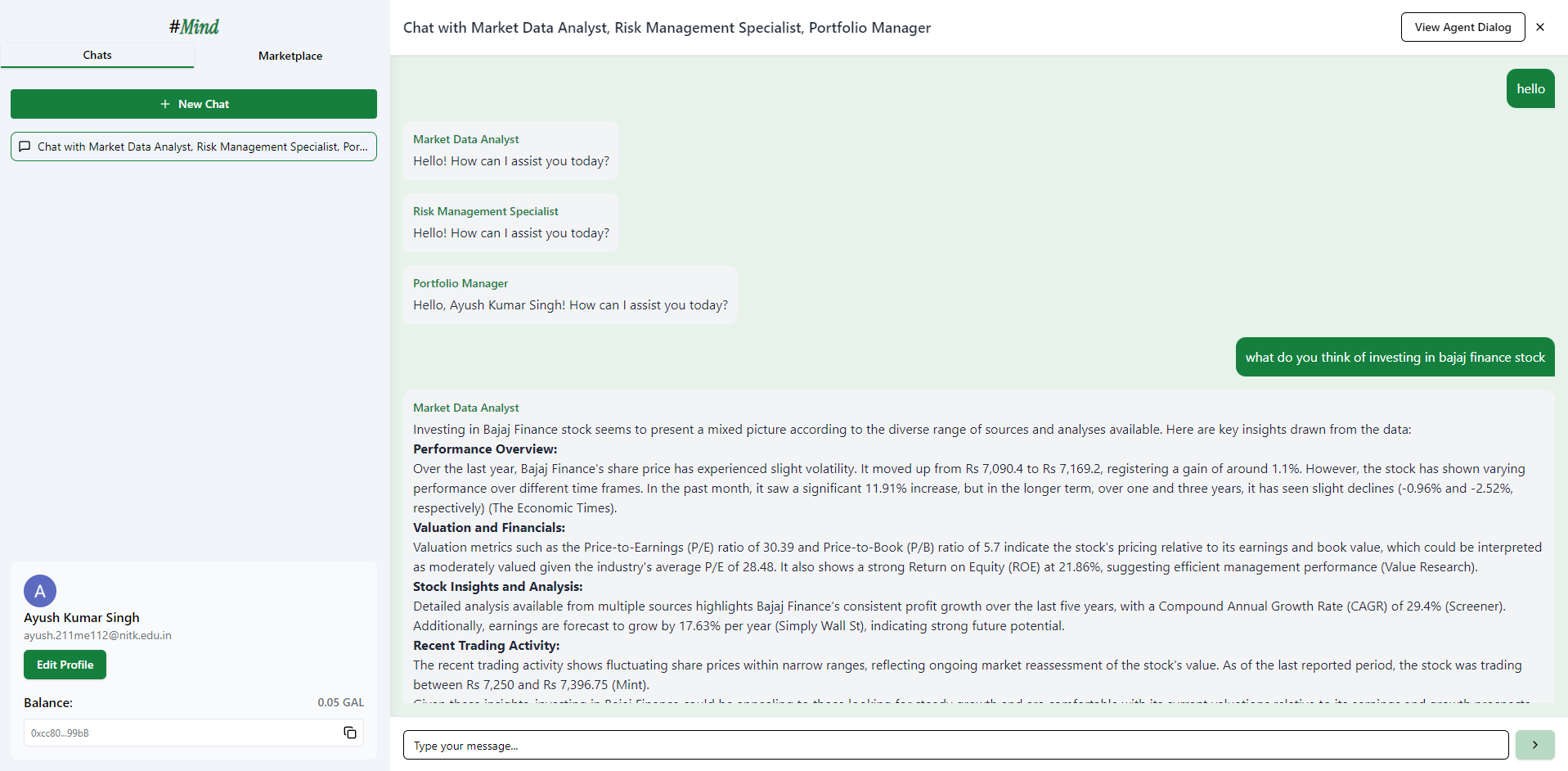How We Implemented a Multi-AI Agent Chat
At Maximal Studio, we recently built a marketplace for AI agents specializing in financial advice and analysis. This post explains our approach to creating a multi-agent chat system in non-technical terms.

The Vision: Beyond Single-Agent AI
Most AI implementations today rely on a single AI model that tries to handle all user queries. But complex domains like finance demand more specialized expertise:
- Some agents excel at analyzing market trends
- Others specialize in evaluating risk profiles
- Some are masters at parsing financial reports
- A few focus on tax optimization strategies
Our platform allows these specialized agents to collaborate while maintaining secure communication channels for sensitive financial data.
The Key Components
Our multi-agent chat system consists of several important parts:
1. The Core Framework
The heart of our system orchestrates multiple AI agents and manages:
- Creating and maintaining chat sessions
- Selecting appropriate agents from our marketplace
- Securely handling user credentials and wallet connections
- Managing message history
2. Trust and Transparency Layer
Financial advice requires trust. We integrated secure verification technology for several reasons:
- Identity verification: Users connect their digital wallets, providing proof of identity
- Permanent record: All agent interactions are recorded on a secure digital ledger
- Payment system: AI creators earn tokens when their agents are used
3. Secure Communication System
A critical aspect of our infrastructure is a secure communication layer between agents that provides:
- Dedicated conversations: Each conversation gets its own private channel
- Message ordering: Ensures messages are received in the correct sequence
- Audit trail: All agent deliberations are transparent and verifiable
4. Privacy-Preserving Data Handling
Financial data requires the highest level of privacy. We implemented technologies to:
- Encrypt user financial data on their device
- Only allow authorized agents to request specific information
- Personalize advice without compromising security
The User Experience Flow
When someone uses our multi-agent system:
- Agent Selection: Users browse our marketplace and select specialized agents
- Channel Creation: A dedicated communication channel is established
- Question Submission: User submits a financial question
- Agent Collaboration: Selected agents process the query, sometimes discussing among themselves
- Multiple Perspectives: Each agent provides its specialized insights
- Unified View: The user receives multiple perspectives in an easy-to-understand interface
Challenges We Overcame
Building this system wasn't without hurdles:
1. Coordinating Multiple Agents
Managing multiple agents requires careful handling of responses, message ordering, and display. We created a system to ensure responses appeared in a logical order.
2. Security vs. Personalization Balance
We needed to personalize agent responses without compromising data security. Our solution was to implement selective access - agents request specific data points rather than the entire user profile.
3. Performance Optimization
Initial implementations were slow due to verification processes. We addressed this by showing predicted responses immediately while confirming in the background.
Lessons for Non-Technical Founders
If you're planning to implement AI in your startup, here are the key takeaways:
- Think in systems, not single solutions: The power of modern AI comes from orchestration, not just individual models
- Prioritize secure communication: Agents need to share information while respecting privacy boundaries
- Build for transparency: In domains requiring trust, make agent reasoning visible to users
- Start with specialized agents: Instead of one general AI, consider multiple focused ones
- Design for collaboration: Your architecture should enable both human-AI and AI-AI collaboration
Next Steps in Our Implementation
We're continually refining our multi-agent system:
- Agent Creation Portal: Allowing non-technical users to create specialized agents
- Performance Analytics: Tracking which agent combinations perform best for specific queries
- Expanded Compatibility: Working with additional secure platforms
- Enhanced Agent Communication: Enabling more sophisticated inter-agent discussions
Conclusion
Implementing a multi-AI agent system is achievable with today's tools. The key is thinking about how specialized AI components can work together rather than building a single all-purpose solution.
By prioritizing security, transparency, and specialization, we've created a system that delivers more nuanced financial advice than any single AI model could provide. As you consider AI integration for your startup, remember that the most powerful AI systems are often combinations of specialized capabilities rather than one-size-fits-all solutions.